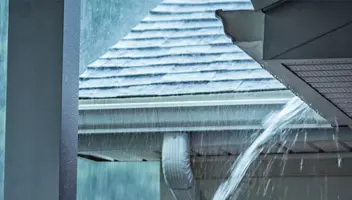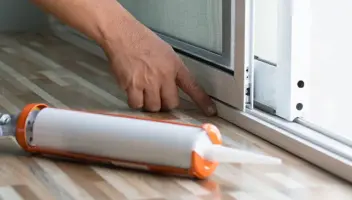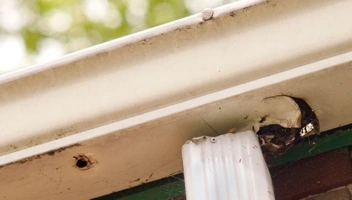How to Install Eavestrough

Whether you’re a first time homeowner or you’re not too keen on the thought of being a handyperson, there are plenty of house maintenance tasks that arise that may seem daunting. Installing eavestrough or gutters is certainly one of those chores, but those who consider themselves to be repair-challenged shouldn’t fret – installing gutters by yourself is not as formidable as it appears. Plus, manual installation is a great way to save yourself some rather than choosing to go with a professional gutter service company. Take a look at these easy steps for how to install eavestrough and how to make them last:
Make your measurements
First things first: Prior to installing eavestrough or gutters, you’ll have to bust out the tape measure and record the lengths of the roofline, as well as the height of the downspouts. Be sure to add on at least 5 feet of gutter. For every downspout you have, you’ll need three elbows to accompany it, so take that into your measurement considerations. If your house as a fascia board, you’ll need to measure its dimensions so you can get a better perspective of where you’ll need to nail the gutters against the board. A good way to gain more insight into how your new gutter system will look is to draw up a blueprint of the project, complete with all the official measurements and dimensions.

Examine your fascia board
Whether you’re replacing an old gutter system or looking to install eavestrough on an older house, it’s essential to inspect the fascia board that rests just under the roof shingles of your home. Any detection of mold or rotting wood means you’ll have to replace the fascia board, or, if damage isn’t too severe, you can apply a fascia cover on top to shield it. Once you have a quality fascia board all set to go, you’ll need to begin installing the gutter brackets that support the gutter. Before you do so, make sure you know where the rafter tails behind the fascia board are located so you can adequately space the rafters between them. When nailing the brackets on, a good rule of thumb for spacing is installing one every 32 inches.
Cutting gutters
Before you begin cutting the gutters to adjust them to the length of your roofline, you’ll need to lay them out on the ground directly below where you’ll be attaching it to get a better visualization of where you need to cut. Once you have the dimensions figured out, put on some gloves and begin cutting the sides off with a set of tin snips. You can also cut your gutters with a hacksaw, and once you have all your sections sliced, be sure to smoothen out the sharper or jagged sides with a file. After you’ve applied the gutter end caps, you’ll need to seal these sections with gutter sealant so you won’t have to endure a leaky gutter in the future. It’s also recommended that during this time you begin to plot out where your downspout locations will be. After marking where the downspouts will be, use the tin snips to cut the outlet hole where the downspout tubes will be inserted.
Hanging up the gutter
Once you’ve reached this stage of the installation process, make sure you have a chalk line along the roofline to use as a frame of reference for the leveling of the gutter. When hanging the gutter within the brackets, remember that your brackets should be mounted at least every 18 to 24 inches. Any gutter end caps should be attached to the fascia board, which can be stabilized by drilling screws in. Use an elbow when applying the downspouts, ensuring that the tubes hug the walls of your home. Apply another elbow at the end of the downspout, and attach some more gutter tubes to divert water away from the foundation of your home. All holes and elbows connecting gutter materials should have sealant applied to them to prevent leaks from occurring.
Protect your gutter
After you’ve installed you’ve figured out how to install eavestrough, it’s time to ensure the ultimate protection by attaching a gutter guard to it. This will work to guarantee that no debris or clutter of any kind infiltrates your gutters, leaving them clog free and eliminating potential leakage into the foundation of your house. Using LeafFilter means that not even a grain of sand can get into your gutters, allowing you to keep the ladder in the garage and never think twice about the effectiveness of your house’s gutters. And, just as a reminder, if you aren’t too keen on replacing your own gutters. LeafFilter professionals are experts in installing eavestrough and can install new gutters for you when they install your gutter protection system.


